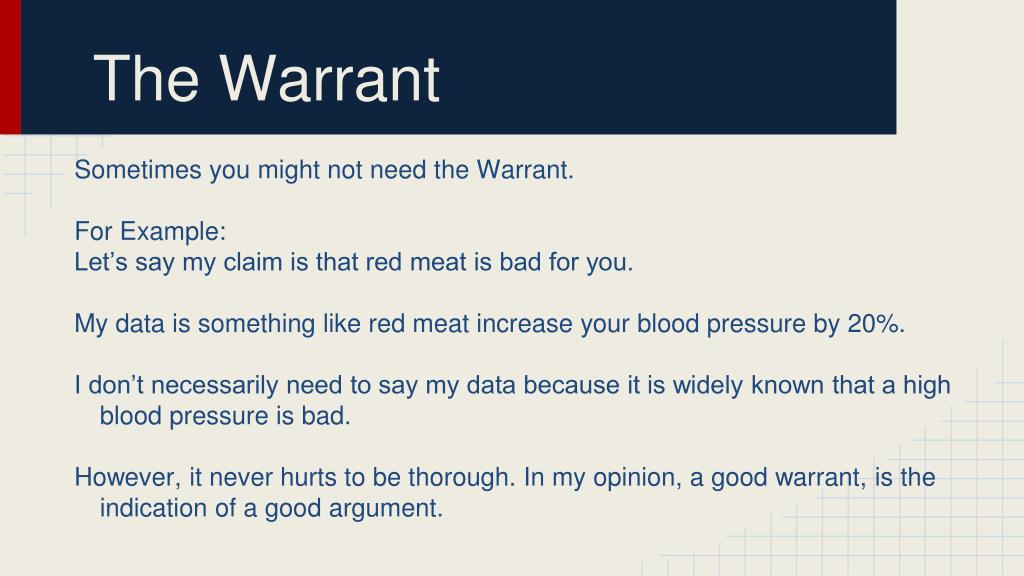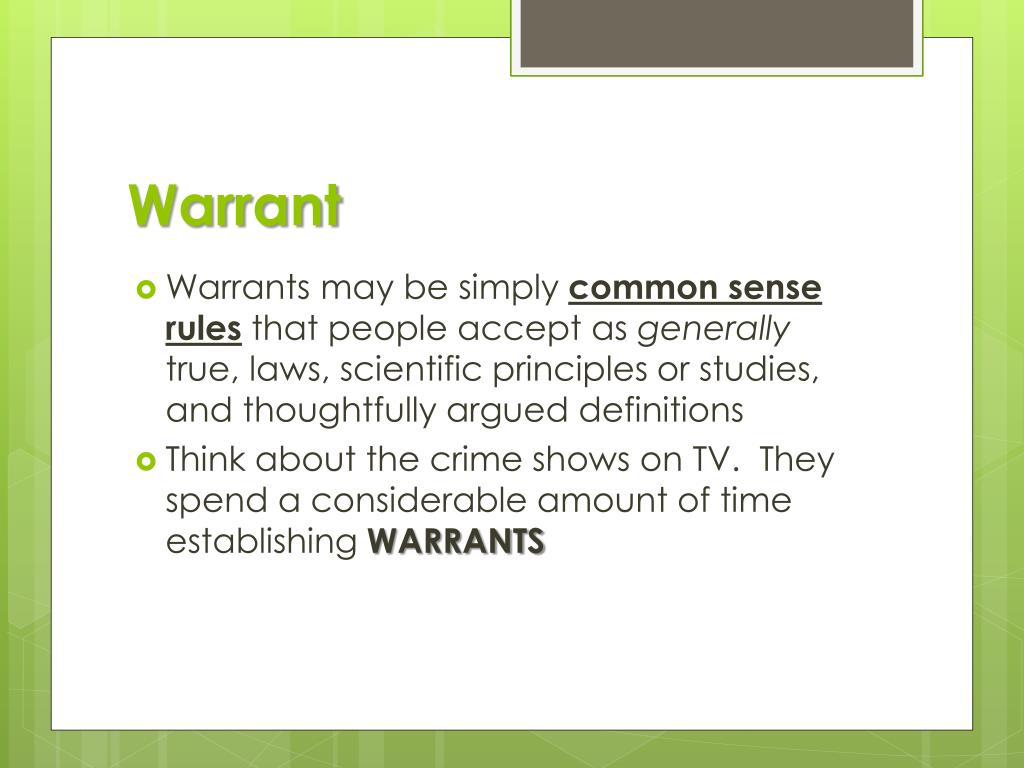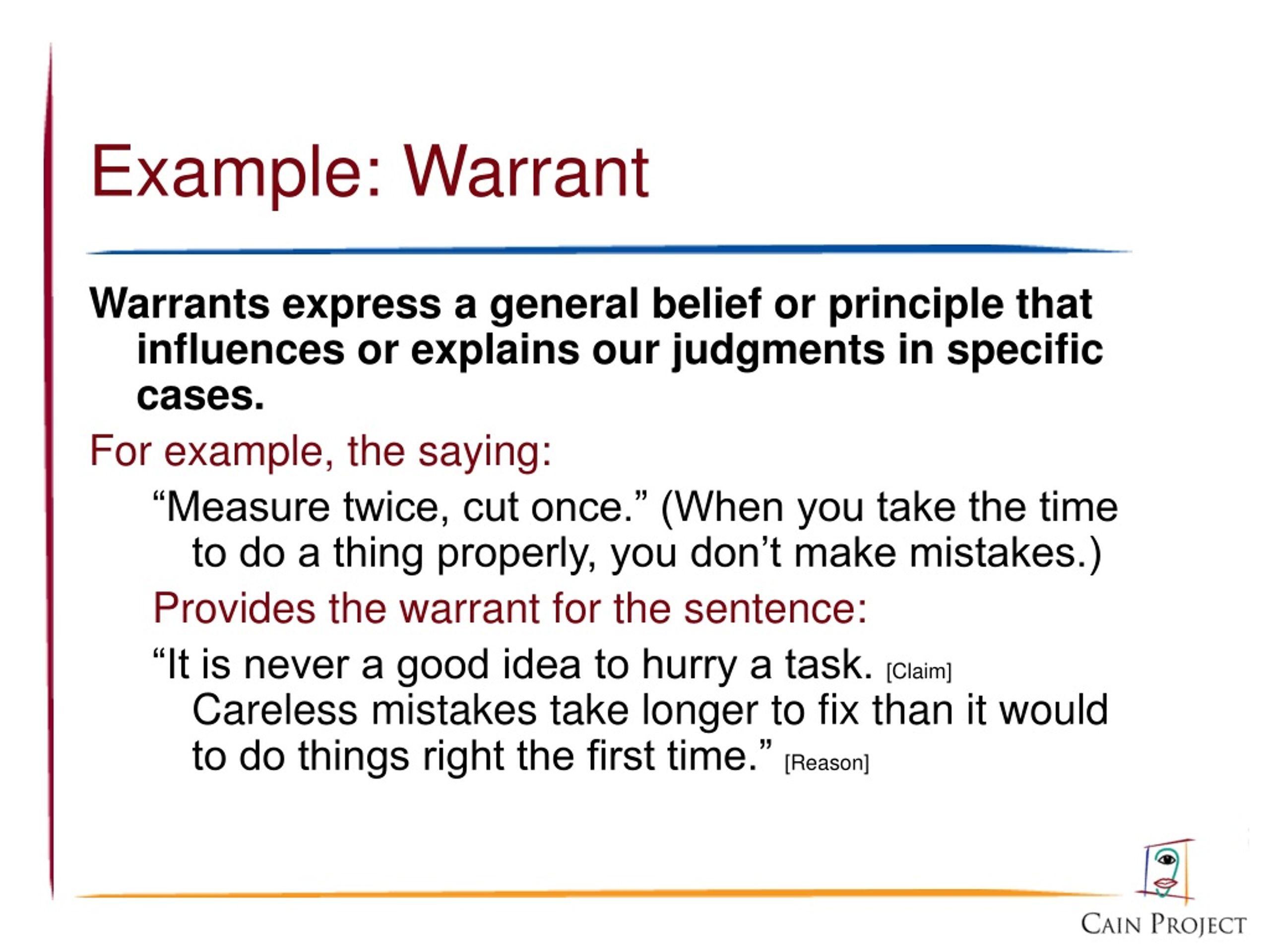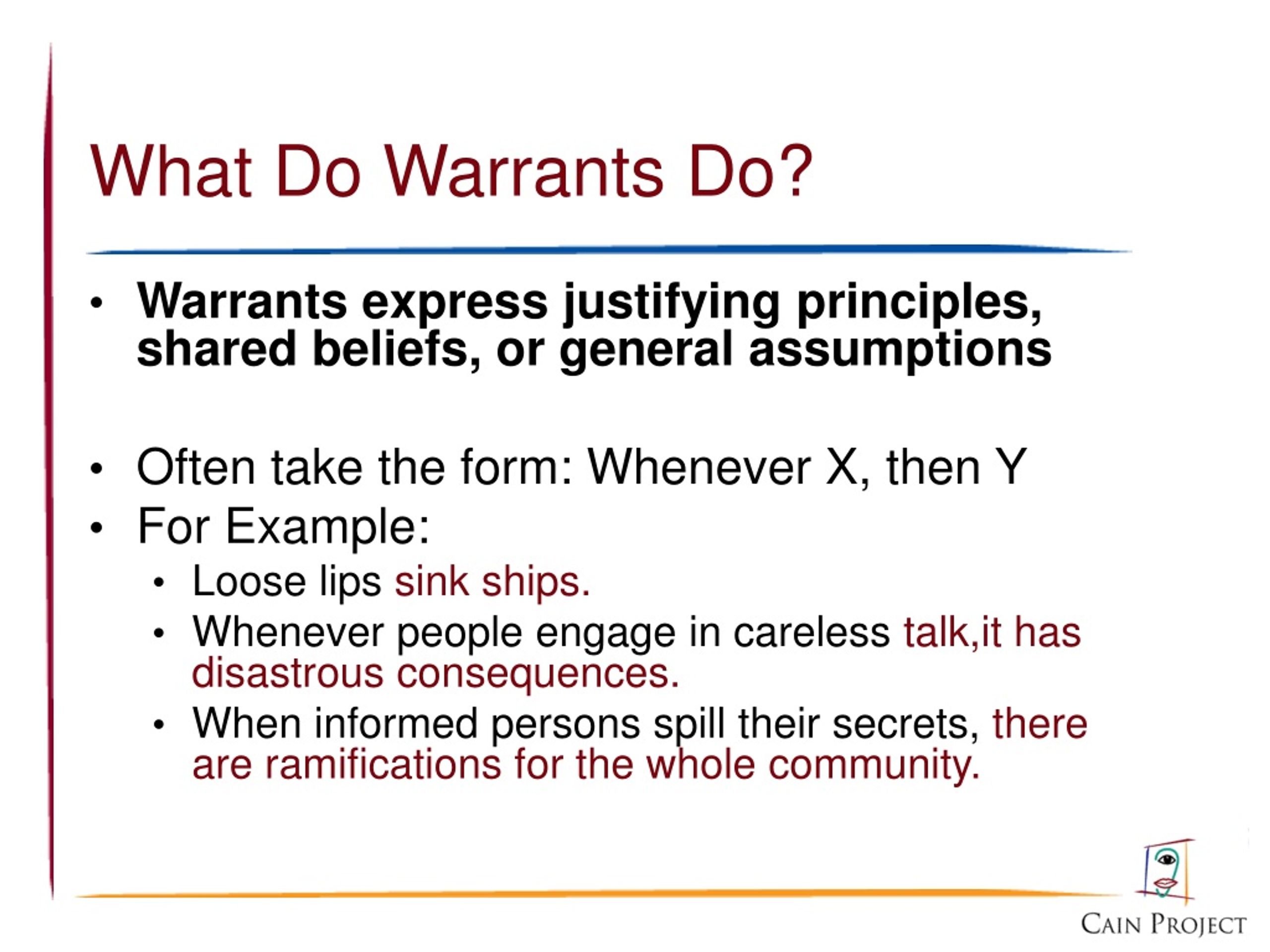Warrant In Writing - Learn how to use claim/evidence/warrant (cl/ev/wa) to organize and critique arguments in writing. What are claims, supports, and warrants? What is a warrant in argumentative writing? The claim, the grounds, and the warrant. In rhetorical analysis, a claim is something the author wants the audience to believe. This resource explains the basic. Learn what warrants are and how to use them to strengthen your arguments. Warrants are underlying beliefs that connect reasons and. A claim is the assertion that. A warrant is a underlying assumption or principle that connects the claim to the data in.
Warrants are underlying beliefs that connect reasons and. Learn what warrants are and how to use them to strengthen your arguments. Learn how to use claim/evidence/warrant (cl/ev/wa) to organize and critique arguments in writing. What are claims, supports, and warrants? What is a warrant in argumentative writing? In rhetorical analysis, a claim is something the author wants the audience to believe. In toulmin’s method, every argument begins with three fundamental parts: A warrant is a underlying assumption or principle that connects the claim to the data in. A claim is the assertion that. This resource explains the basic.
What is a warrant in argumentative writing? A claim is the assertion that. This resource explains the basic. In rhetorical analysis, a claim is something the author wants the audience to believe. The claim, the grounds, and the warrant. A warrant is a underlying assumption or principle that connects the claim to the data in. In toulmin’s method, every argument begins with three fundamental parts: Learn how to use claim/evidence/warrant (cl/ev/wa) to organize and critique arguments in writing. What are claims, supports, and warrants? Warrants are underlying beliefs that connect reasons and.
What is a Warrant in Writing? Exploring Different Types and Their Legal
In rhetorical analysis, a claim is something the author wants the audience to believe. This resource explains the basic. The claim, the grounds, and the warrant. A warrant is a underlying assumption or principle that connects the claim to the data in. Learn what warrants are and how to use them to strengthen your arguments.
CLAIM, DATA, WARRANT WRITING ARGUMENTATIVE PARAGRAPHS ppt download
Warrants are underlying beliefs that connect reasons and. In toulmin’s method, every argument begins with three fundamental parts: Learn how to use claim/evidence/warrant (cl/ev/wa) to organize and critique arguments in writing. This resource explains the basic. A claim is the assertion that.
PPT How to write an Essay PowerPoint Presentation, free download ID
Learn how to use claim/evidence/warrant (cl/ev/wa) to organize and critique arguments in writing. Warrants are underlying beliefs that connect reasons and. What is a warrant in argumentative writing? In rhetorical analysis, a claim is something the author wants the audience to believe. A warrant is a underlying assumption or principle that connects the claim to the data in.
PPT Argumentative Writing PowerPoint Presentation, free download ID
Learn how to use claim/evidence/warrant (cl/ev/wa) to organize and critique arguments in writing. A claim is the assertion that. What are claims, supports, and warrants? In toulmin’s method, every argument begins with three fundamental parts: Warrants are underlying beliefs that connect reasons and.
Read The Claim. Then Explain The Warrant
What are claims, supports, and warrants? A claim is the assertion that. In toulmin’s method, every argument begins with three fundamental parts: The claim, the grounds, and the warrant. A warrant is a underlying assumption or principle that connects the claim to the data in.
What is a Warrant in Writing? Everything You Need to Know Find Legal Info
A warrant is a underlying assumption or principle that connects the claim to the data in. Learn how to use claim/evidence/warrant (cl/ev/wa) to organize and critique arguments in writing. What is a warrant in argumentative writing? A claim is the assertion that. Warrants are underlying beliefs that connect reasons and.
PPT Essay One PowerPoint Presentation, free download ID310383
In rhetorical analysis, a claim is something the author wants the audience to believe. In toulmin’s method, every argument begins with three fundamental parts: A claim is the assertion that. Learn how to use claim/evidence/warrant (cl/ev/wa) to organize and critique arguments in writing. The claim, the grounds, and the warrant.
PPT Writing Module Three Five Essential Parts of Argument PowerPoint
A claim is the assertion that. Learn how to use claim/evidence/warrant (cl/ev/wa) to organize and critique arguments in writing. The claim, the grounds, and the warrant. Warrants are underlying beliefs that connect reasons and. This resource explains the basic.
Claimwarrantsupport Claim, Support, and Warrant The Basics of
In toulmin’s method, every argument begins with three fundamental parts: Warrants are underlying beliefs that connect reasons and. What are claims, supports, and warrants? A claim is the assertion that. The claim, the grounds, and the warrant.
PPT Writing Module Three Five Essential Parts of Argument PowerPoint
Learn how to use claim/evidence/warrant (cl/ev/wa) to organize and critique arguments in writing. Learn what warrants are and how to use them to strengthen your arguments. What are claims, supports, and warrants? This resource explains the basic. A warrant is a underlying assumption or principle that connects the claim to the data in.
This Resource Explains The Basic.
What is a warrant in argumentative writing? In rhetorical analysis, a claim is something the author wants the audience to believe. A claim is the assertion that. What are claims, supports, and warrants?
Learn How To Use Claim/Evidence/Warrant (Cl/Ev/Wa) To Organize And Critique Arguments In Writing.
Warrants are underlying beliefs that connect reasons and. The claim, the grounds, and the warrant. In toulmin’s method, every argument begins with three fundamental parts: A warrant is a underlying assumption or principle that connects the claim to the data in.

+One+of+the+biggest+changes+to+Elie+Wiesel+was+the+gradual+loss+of+care+for+his+family..jpg)







